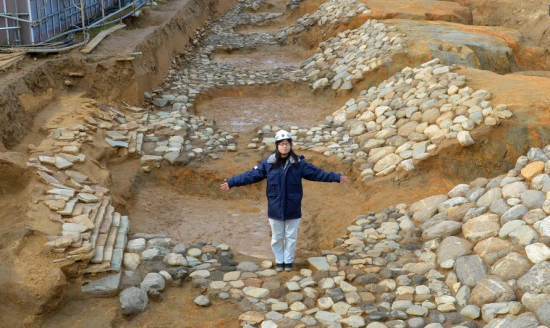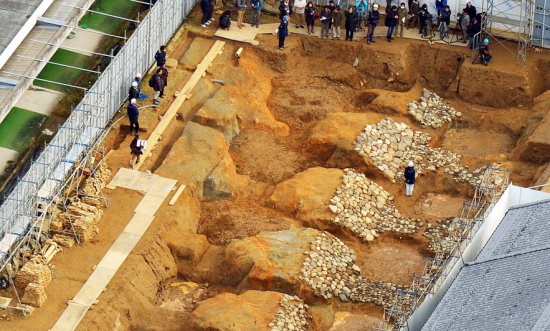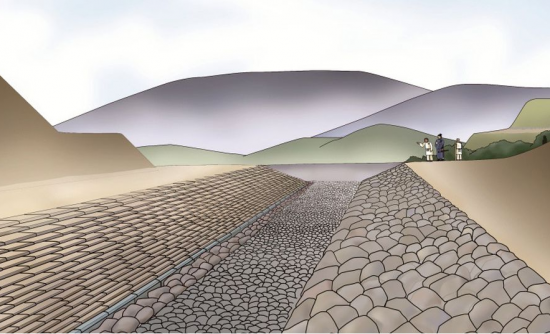Kazuto Tsukamoto
Source - http://ajw.asahi.com/article/behind_news/social_affairs/AJ201501160080
Local archaeologists said Jan. 15 that they have unearthed the remnants of a possible mid-seventh century burial mound for an ancient emperor at the Koyamada ruins on the site of a school.

The moat in Asuka, Nara Prefecture, that is believed to be part of the first burial site of Emperor Jomei (593-641) (Asahi Shimbun file photo)
“The mound is highly likely the first burial site of Emperor Jomei (593-641), described in the ‘Nihon Shoki’ (The Chronicles of Japan) as the place where his body rested until it was later transferred to another location,” said Fuminori Sugaya, the director of the Archaeological Institute of Kashihara, Nara Prefecture.
The researchers made the estimate based on the ruin's location, size and unique construction method.
The ancient emperor was the father of two more well-known emperors, Emperor Tenji (626-671) and Emperor Tenmu (?-686).
The ruins were excavated during archaeological digging associated with school replacement work on the site.
The excavation site contains what is believed to be part of a moat lined with boulders along one of its slopes, according to the researchers. The remnants of the moat measures 48 meters in length and 3.9 to 7 meters in width.
While 40-centimeter quartz diorite boulders line the northern slope of the moat, the bottom is covered with stones measuring 15 cm to 30 cm.
The southern slope is covered with flagstones made of two-step chlorite schist that are topped with special flagstones known as “Haibara,” a type of rhyolite stone, stacked in a staircase pattern. The total number of steps in some areas is 10.

An aerial view of newly discovered remains belonging to a large burial mound in Asuka, Nara Prefecture (Kazunori Takahashi)
Based on speculation that the ruins are a moat belonging to a burial site, the researchers estimate the mound was square-shaped with each side measuring 50 to 80 meters, far larger in size than the ancient and renowned Ishibutai grave in Asuka, which measures 50 meters by 50 meters.
It is rare for chlorite schist and Haibara stones to be laid out around a burial mound.

An artist rendering of how the burial mound originally looked (Provided by the Archaeological Institute of Kashihara)
The Dannozuka burial mound in Sakurai, Nara Prefecture, which has been designated as Jomei’s grave by the Imperial Household Agency, was built according to the same design and with the same materials.